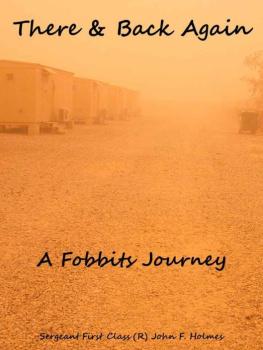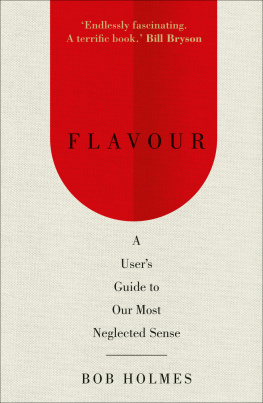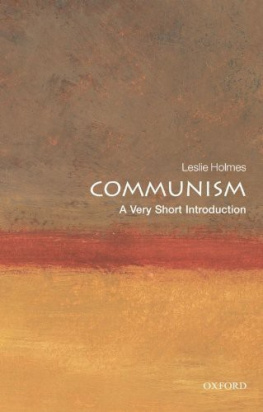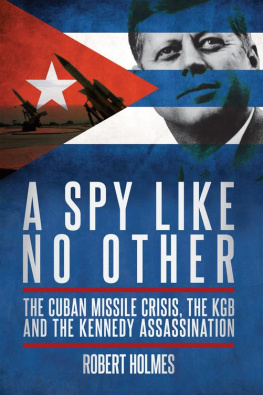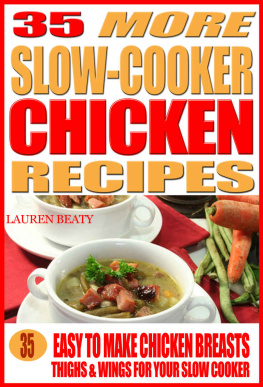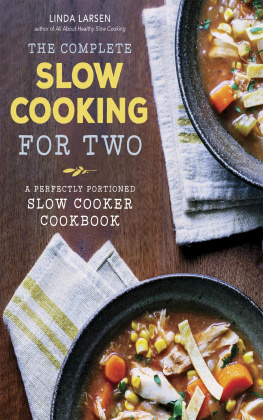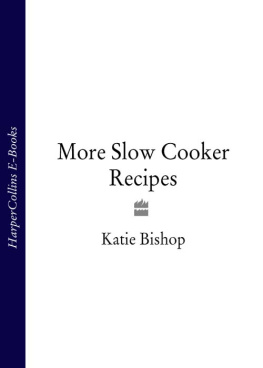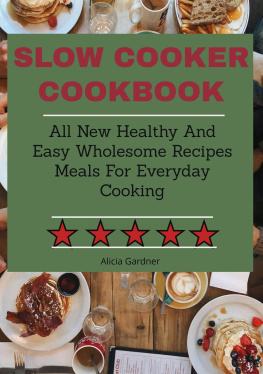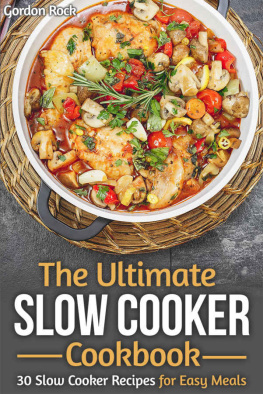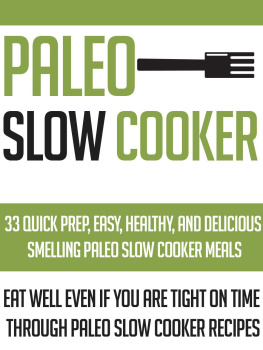Introduction D ear Reader! I would like to take this opportunity to thank you for taking the time to read my book and hope that you find these slow cooker recipes interesting and tasty! B efore we start exploring these delicious slow cooker recipes, I would like to introduce myself. My name is Maria Holmes and I am indeed the author of this slow cooker recipe book that you are now reading. If you are interested in learning more about me, my mission and my passion, please join my Facebook community at Homes Cooked Meals f or interesting activities and enthusiastic discussions. Or you might want to visit my blog at HolmesCookedMeals.com . B ut lets get back to the topic at hand Satisfying Slow Cooker Meals and More . A s calendars fill up, it gets harder and harder to find the time to enjoy family meals together.
The recipes in this cookbook can help you ease that dinnertime crunch. All it takes is a slow cooker and this versatile collection of recipes, and you're on the way to preparing delicious meals that simmer for hours and are ready to serve in minutes at the end of the day. Each one of these 80 exceptional ideas has personally been tested to guarantee that it works perfectly and is practical for your family. Y ou will find main dishes for every taste - from beef, pork, and lamb entres to poultry, fish, and meatless recipes. Plus there are slow-simmering side dishes and appetizers to tote to potlucks or serve at parties. And to make meal planning easy, you can take advantage of the three bonus chapters that showcase quick salads, breads, and desserts to round out slow-cooker meals.
If you have questions about slow cooking, check the slow cooker basics chapter for helpful information. W ith the creative ideas in Satisfying Slow Cooker Meals and More, you will always have the help and inspiration you need to fit satisfying home-cooked meals into your busy family's routine. E njoy and be well! 

Slow-Cooker Basics With the help of a slow cooker, you can serve hearty home-style meals whenever you like. Keep these practical pointers in mind to make the most of this versatile, time-saving appliance. Types of Slow Cookers When you shop for a slow cooker, you'll find two types - continuous and multipurpose. The recipes in this book were tested with a continuous slow cooker.
It has heating coils that wrap around the sides of the unit and remain on when the cooker is in operation. Usually there are two fixed heat settings - LOW (about 200 o F) and HIGH (300 o F). Some models also have an automatic setting that shifts from HIGH to LOW during use. Many models have removable liners. Multipurpose slow cookers have heating elements located below the food container and dials that indicate cooking temperatures. Because these units cycle on and off, the recipes in this book will not cook properly in these cookers.
What Size is Best? The size of slow cooker you need depends on the number of people you plan to serve. That's why some cooks own several sizes. For one or two servings, the small 1-1/2-quart size works best. It's also handy for keeping appetizers and dips warm at parties. The intermediate 3-1/2 to 4-1/2-quart cooker typically simmers enough to serve three or four. If you have a larger family or five to seven people or want to cook enough for two meals, look for a 4-1/2 or 5-quart cooker.
And if you frequently cook for eight or more, you may want to invest in a 6 to 8-quart model. Avoid Switching Sizes If you don't have the size of slow cooker called for in a recipe, it's important not to substitute a smaller or larger size. To work most efficiently, a slow cooker must be at least 1/2 but nor more than 2/3 full. That's because the heat comes from the coils around the sides, not on the bottom. Most of the recipes in this book give a range of cooker sizes (such as 3-1/2 or 4-quart). Be sure to use one that's within the range so the food cooks to the right doneness within the time listed.
Plan Ahead Because you'll want to start many slow-cooker recipes early in the day, you can eliminate some breakfast-time hassle by preparing ingredients the night before. Here are a few dos and don'ts: Chop vegetables and refrigerate them in separate containers. (You can keep cut-up potatoes from turning brown by covering them with water). Or if your cooker has a removable liner, place the vegetables in the liner, cover it, and keep it in the refrigerator until the next morning. Assemble, cover, and chill liquid ingredients or sauces separately from the solids. If you'd like to brown ground meat or poultry and bulk sausage the night before, be sure to cook it completely.
Then store the meat tightly covered in the refrigerator. Don't brown roasts, cubed meat, or poultry pieces ahead because browning doesn't cook the meat or poultry completely through. Adapting Family Recipes If you'd like to convert a favorite recipe from conventional directions to slow-cooking methods, follow these guidelines: Select a recipe that uses a less-tender meat cut, such as pork shoulder or beef chuck, which usually requires long cooking. You'll need to experiment with recipes that use dairy products because they can break down during extended cooking. If you like, stir in cream, sour cream, or cheese just before serving. Then find a recipe in this book that's similar to your recipe to use as a sample.
It will give you a feel for quantities and liquid amounts. Cut the vegetables into pieces similar in size to those in the sample recipe then place them in the cooker. Trim the fat from the meat and, if necessary, cut the meat to the fit the cooker. Place the meat on top of the vegetables. Because liquids don't boil away as they do in conventional cooking, reduce the liquids in the original recipe by about half (except those dishes containing rice).
Slow-Cooker Tips Keep a Lid On When something is cooking in a slow cooker, resist the temptation to lift the lid.
Slow-Cooker Tips Keep a Lid On When something is cooking in a slow cooker, resist the temptation to lift the lid.
The domed lid allows condensation to run down inside, forming a water seal that keeps in heat. Removing the lid allows the heat to escape and it takes the cooker a long time to build the heat back up. Slow-cooker recipes shouldn't need stirring, but if you need to add ingredients, replace the lid quickly. If you lift the lid without being instructed to do so, add about 30 minutes to the cooking time. Thaw Meat First Don't put frozen meat or poultry directly into a slow cooker. If the meat thaws as it cooks, the mixture will be in a temperature zone (40 o F to 140 o F) where bacteria thrive for too long.


